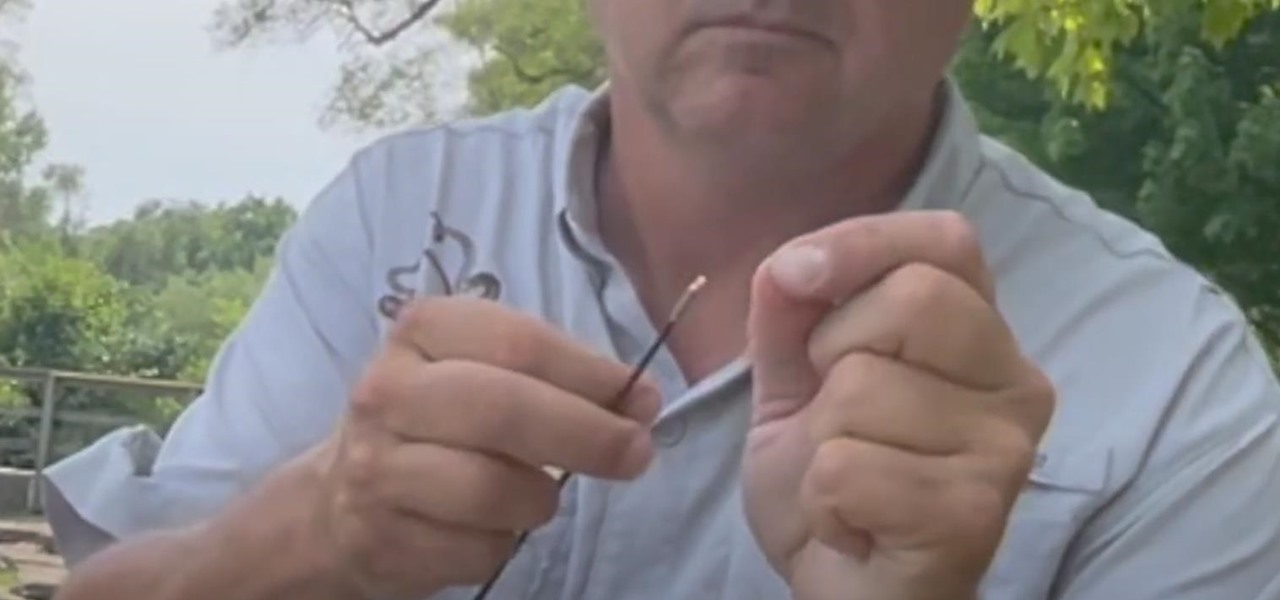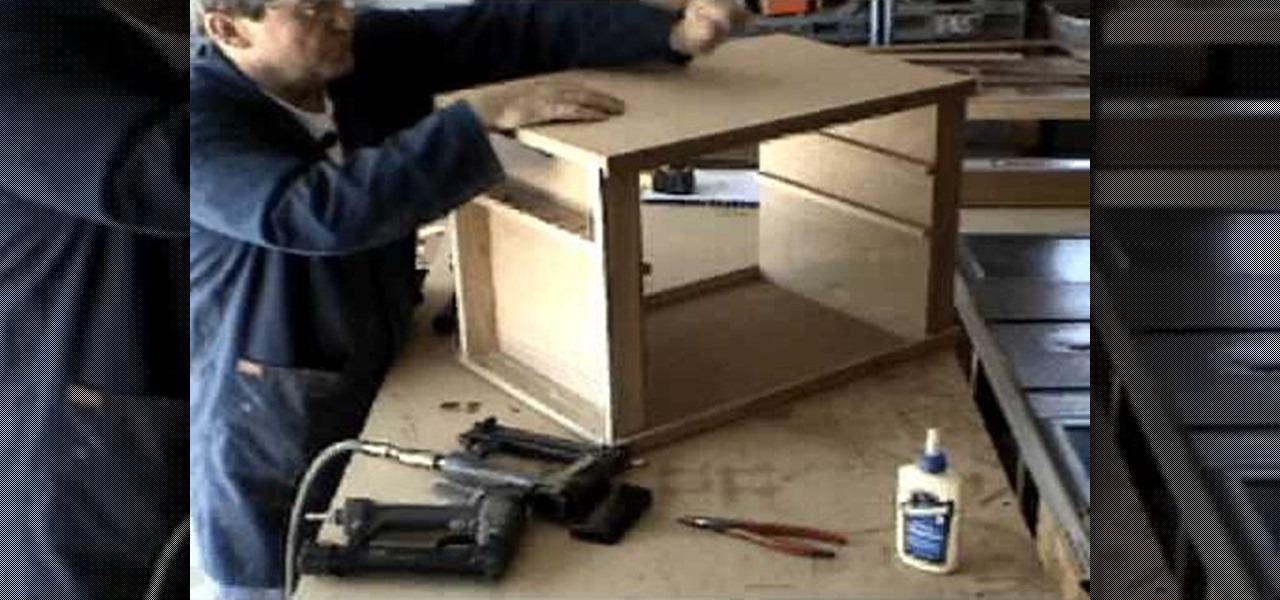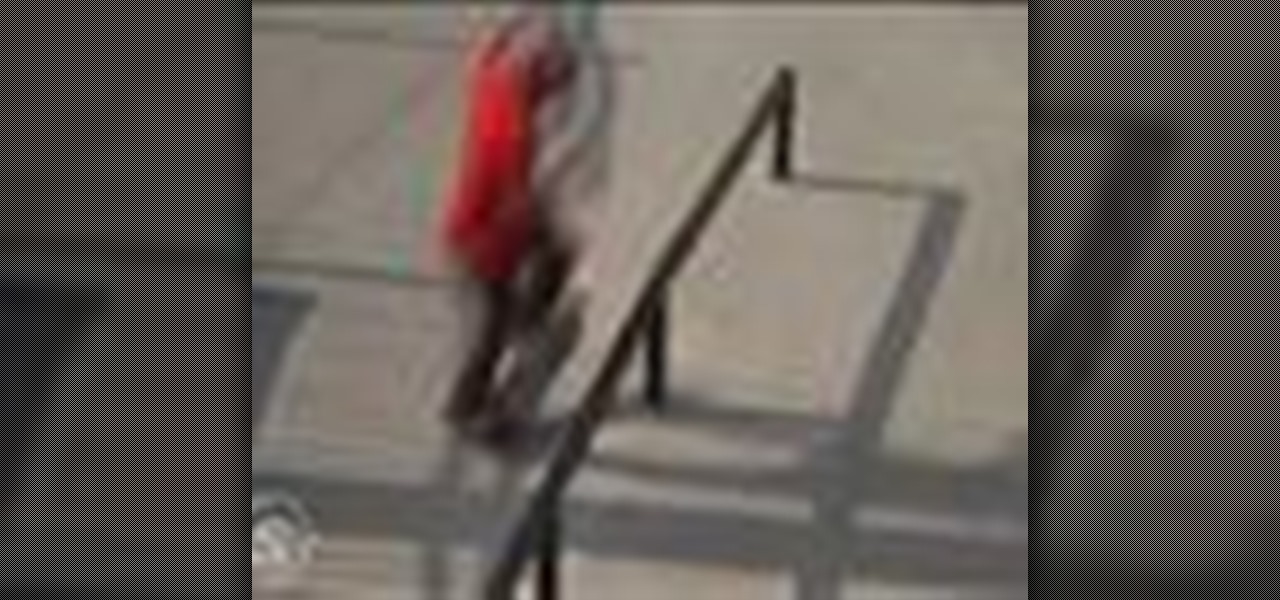Hot Outdoor Recreation Posts


How To: Tie the snell knot for fishing
Learn how to tie the snell fishing knot. 1. Run line through the eye and down the shank of the hook. Form a loop behind the eye with the line against the hook shank. 2. Pass tag end around line and shank and through loop four plus times. Keep turns in a neat row and pull tag end to tighten turns around the shank. 3. Work coil or turns down the shank to the eye by pulling on standing line. Pull alternately on tag end and standing line until snug. Congratulations! You just learned how to tie th...
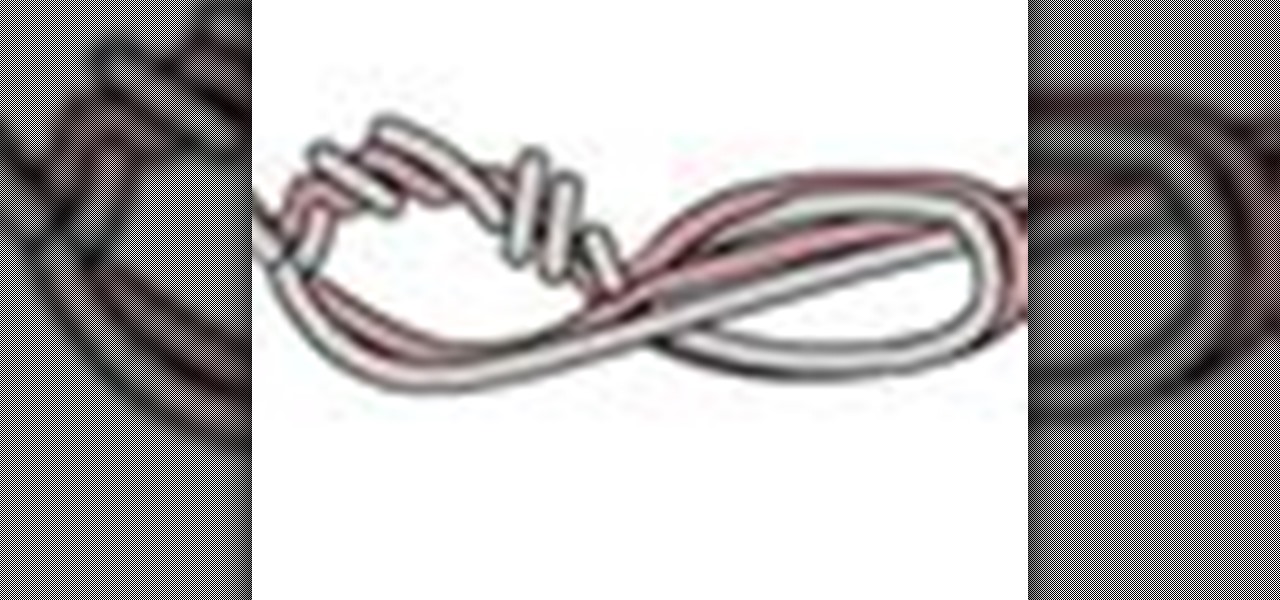
How To: Tie the seaguar knot for fishing
Ever wonder how to tie the seaguar knot for fishing? Then stay tuned for this fishing knot tutorial video. The seaguar knot was introduced by the factory reps from fluorocarbon manufacturer Seaguar, this easy to tie and reliable fishing knot joins fluorocarbon leaders to monofilament line. 1. Make a loop in the line and in the leader and hold loops side by side. Note: line running from left is on top. 2. Insert index finger into loops and make 3 full counter clockwise twists. 3. Hold loops op...
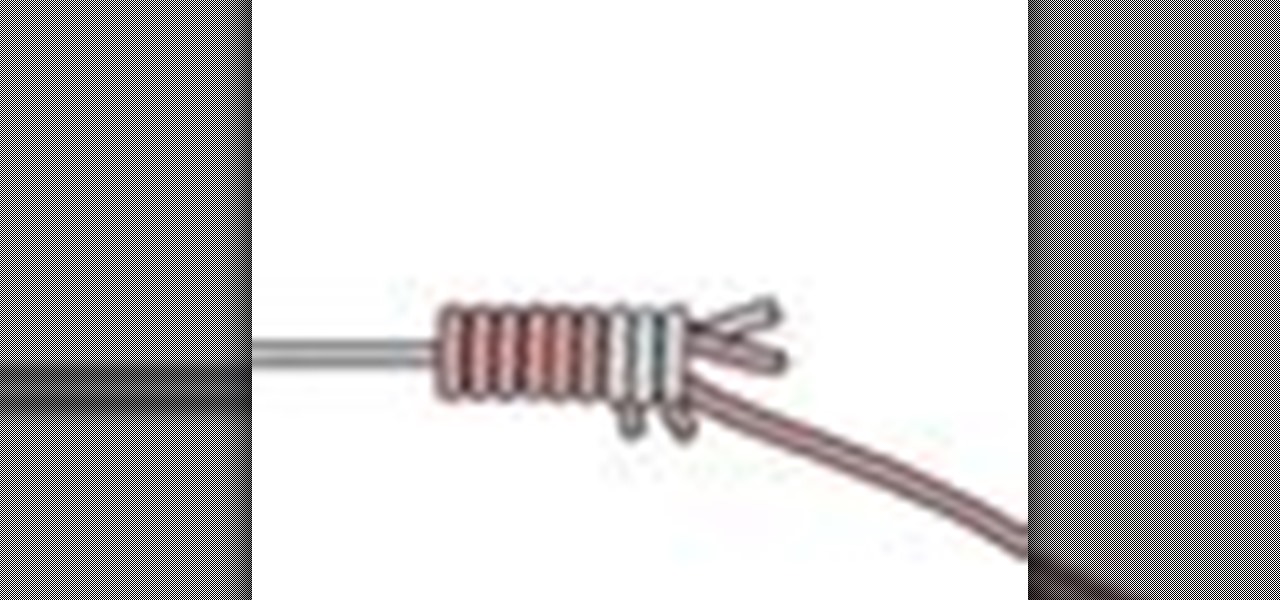
How To: Tie the slim beauty knot for fishing
The slim beauty knot is an excellent knot for attaching leaders to class tippet or leaders to the main line. Another good use is to attach a fluorocarbon or mono leader to braided line. 1. Tie a double overhand knot in end of leader. Pull knot semi-tight to form a figure eight. 2. Double 15-24" of main line and pass through top and bottom of figure eight. Warp four times down the leader and three times back again. Pass loop through first gap formed by the wraps. 3. Tighten down figure eight f...
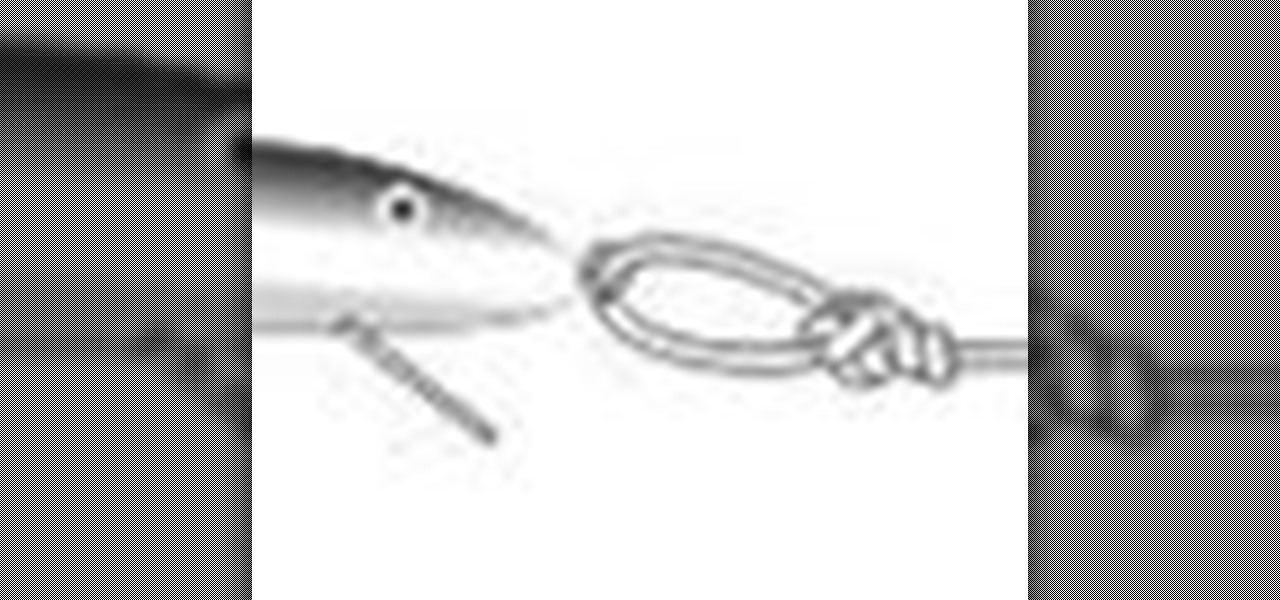
How To: Tie the rapala fishing knot
Ever wonder how to tie the rapala fishing knot? Wonder no more. Watch this instrucional knot tying video and find out. The rapala knot is a popular method to tie a lure (such as a rapala!) to a line such that it can move freely and unimpeded by the knot. Essentially the same as the non slip mono loop, the knot has one more step in it's making. Whether this makes it more secure is still up to debate. It does make it slightly more difficult to tighten down neatly, but with practice it can be do...

How To: Tie the offshore swivel knot for fishing
Learn how to tie the offshore swivel knot with this knot tying instructional video. The offshore swivel knot is exceptionally strong - if one strand breaks, the other will probably hold regardless of the amount of stress on the fishing knot! Often used in conjunction with a Bimini twist knot, it can also be used to attach a hook. Hopefully this knot tying lesson will help you master the offshore swivel fishing knot! Tie the offshore swivel knot for fishing.

How To: Do the dropper loop fishing knot
Learn how to tie the dropper loop fishing knot with this instructional video. The dropper loop fishing knot forms a loop anywhere on a line. Hooks or other tackle can then be attached to the loop. 1. Form a loop in the line at the desired location. Pull line from one side of loop down and pass it through and around that side of loop. Make 5+ wraps around the loop, keeping a thumb or forefinger in the new opening which is formed. 2. Push bottom of original loop up through new opening and hold ...
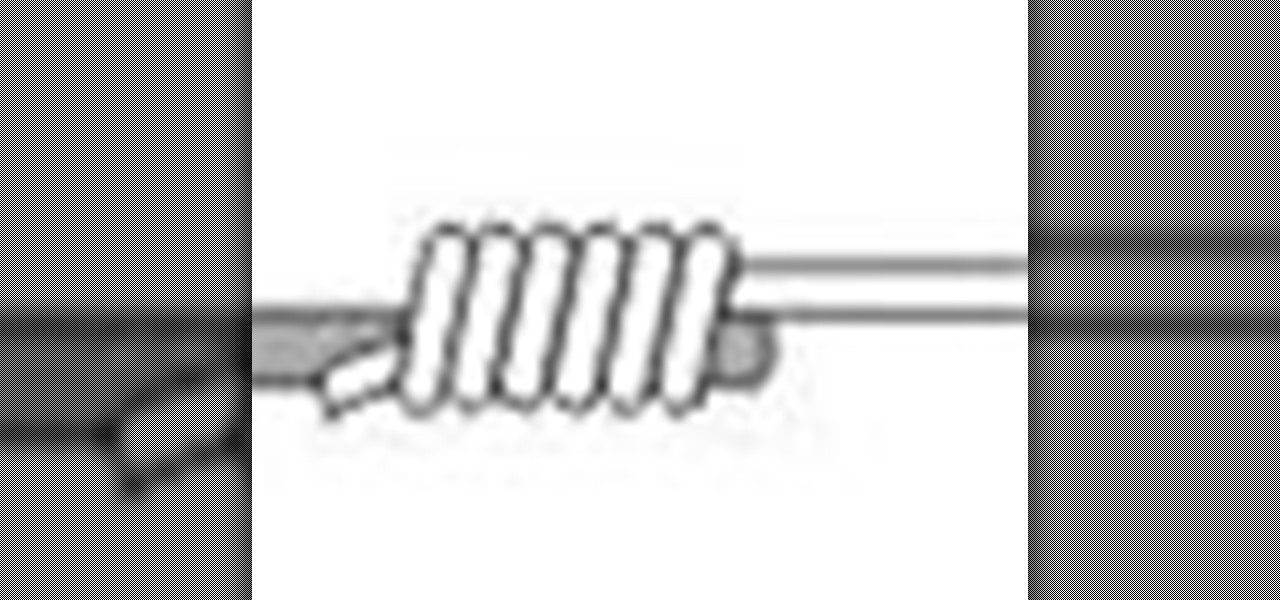
How To: Tie the nail knot for fishing
Learn how to tie the nail fishing knot with this knot tying instructional video. The nail knot is a popular and time tested fishing knot to join fly line to leader. Use of a hollow tube instead of a nail makes for easier tying. 1. Lay a nail or hollow tube against the end of a fly line. Set the butt section of a leader against the line and the tube or nail. Leave an aextra 10" - 12" of it's tag end to tie the fishing knot. 2a. Hold all three pieces together with left thumb and forefinger and ...

How To: Tie the improved cinch fishing knot
Watch this knot tying instructional video and learn how to tie the improved clinch knot for fishing. The improved clinch knot has become one one of the most popular fishing knots for tying terminal tackle connections. It is quick and easy to tie and is strong and reliable. The improved clinch knot can be difficult to tie in lines in excess of 30 lb test. Five+ turns around the standing line is generally recommended, four can be used in heavy line. This fishing knot is not recommended with bra...
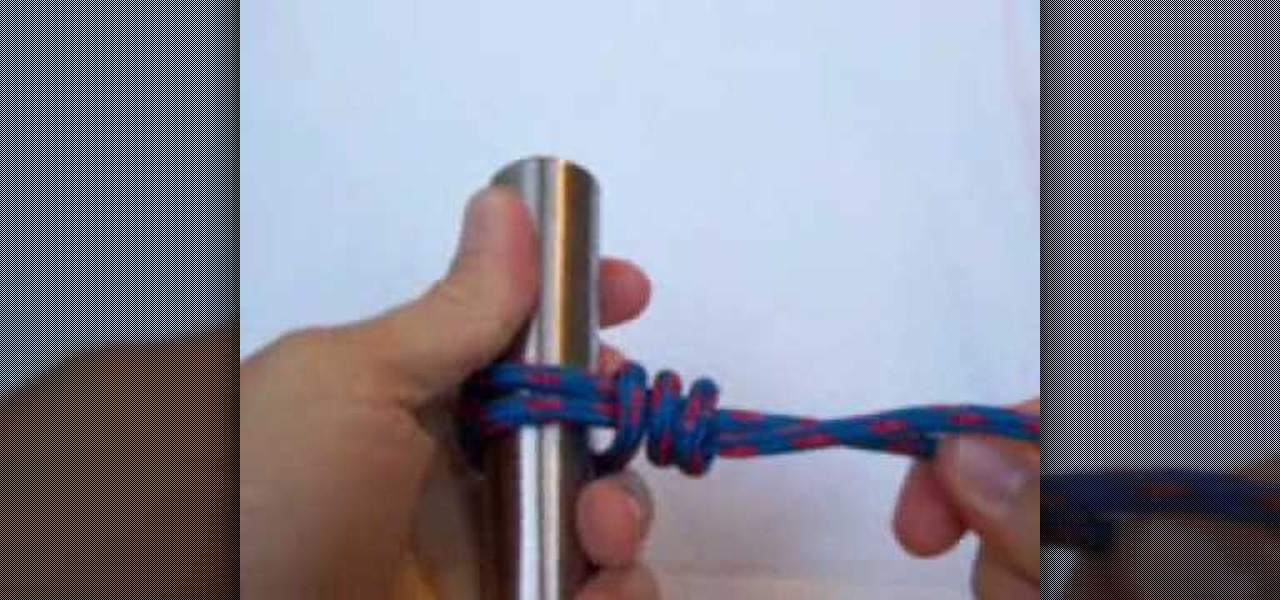
How To: Tie a Girth Hitch/Lark's Foot knot for rock climbing
The Girth Hitch or Lark's Foot knot is only suggested as a means of attached slings to a harness while rock-climbing. As the knot reduces the strength of the sling, it's not intended for attaching two slings together. Watch this video rock climbing tutorial and learn how to tie a Girth Hitch or Lark's Foot knot.

How To: Self rescue from a crevasse using two Prussiks
This guy does an awkward job of showing you how to set up two prussiks to ascend a rope. However you can take what you need to the climbing gym and have some thing to practice. Remember you have to practice this stuff a bit at least. Out on a glacier it is no longer crevasse rescue practice it's just crevasse rescue. So check out this climbing tutorial video and practice your safety techniques and learn how to self rescue from a crevasse using two Prussiks.

How To: Ascend with prussik and garda hitch
This is just a demonstrational video of someone climbing using basic climbing equipment. Check out how to ascend with a prussik and garda hitch. This video is great for mountain climbing aficionados. For more detail look up the other crevasse self rescue videos.
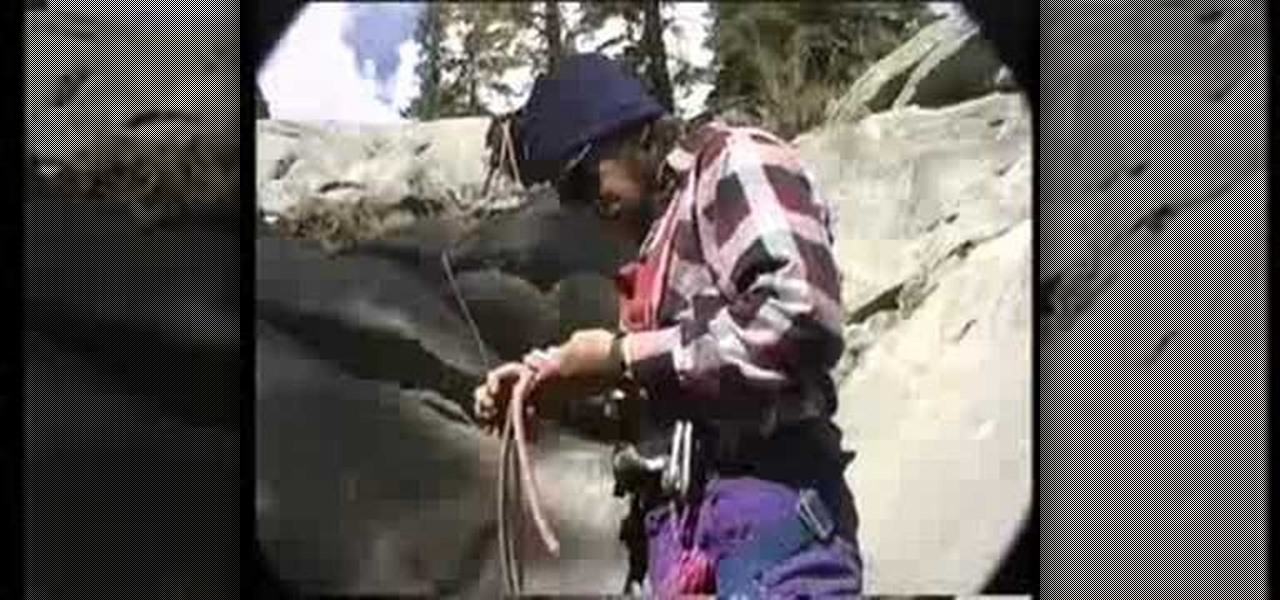
How To: Get ready for glacier travel while climbing
Check out this instructional climbing video that illustrates how to get ready for glacier travel while climbing. Learn everything you needed to know to properly prepare for a safe glacier trip. This tutorial video offers crevasse rescue tips and safety precautions. Follow along with this video and get ready to glacier travel and crevasse hunt.

How To: Lower off the top while climbing
A great percentage of sport climbing accidents happen after the climber reachs the anchor. Next to belayer miscommunication not having a system is the next killer.

How To: Set up the ascent system for crevasse self rescuing
Check out this instructional climbing video that demonstrates how to set up the ascent system for crevasse self rescue. Hooking up the prussik is the subject of this video and stops at the second ascender required for upward mobility. Watch all the crevasse self rescue series and you may get the hang of this. It is best to practice this somewhere dry and safe before the real thing happens. When you are in the hole things get tougher.

How To: Daisy chain Prussik to harness for glacier travel
Check out this instructional climbing video that demonstrates how to daisy chain a Prussik to a harness for glacier travel. Setting your prussik up for glacier travel is the flavor of today. Paul shows us a quick simple way to daisy chain off your spare prussik cord. This stuff is well worth setting up before it is required. Often when you are in a hole things get awkward the more stuff set up the better your chances of getting yourself out.

How To: Self rescue from a crevasse while climbing
This is just a short climbing tutorial that demos what happens just after you go into the crevasse. Ditching the pack is easy if you have pre-hooked the pack to harness. The nest step is securing yourself with a prussik and getting it ready to use as a stirrup. But as we see, practice practice practice. Check out this instructional climbing video that offers some self rescue tips from a crevasse while climbing. These are good safety tips and procedures to learn.

How To: Tie the heaving line knot for boating
Check out this instructional boating video that demonstrates how to tie the heaving line knot for boating. Animations are the best way to learn to tie a knot. Just follow the simple steps outlined in this instructional fishing video and learn how to tie a heaving line knot. Start reeling in the big fish! Tie the heaving line knot for boating.

How To: Tie the running bowline knot for boating
Check out this instructional boating video that demonstrates how to tie the running bowline knot for boating. Animations are the best way to learn to tie a knot. Just follow the simple steps outlined in this instructional fishing video and learn how to tie a running bowline knot. Start reeling in the big fish! Tie the running bowline knot for boating.

How To: Jet ski safely
Check out this tutorial jet ski video that provides several safety tips on riding your personal water craft with caution. Personal Water Craft (PWC), also called Jet Skis and Wave Runners, are the fastest growing watercraft on the waterways. Along with their popularity has come increasing numbers of injuries and deaths. Commander Tom Martin of the U.S. Coast guard says riders need to follow the rules of the road, as well as wear life jackets and have other safety equipment on board. John Birk...

How To: Tie the blood knot for fishing like a pro
Ever wonder how to tie the blood knot for fishing? Well, wonder no more! Learn how to tie the blood knot with this instructional fishing knot animation. Use the blood knot to join sections of leader or line together. It works best with lines of approximately equal diameter.

How To: Tie the trucker's hitch knot for boating
Learn how to tie the trucker's hitch knot. The trucker's hitch knot is one of those boating knots that once you learn it, you wonder how you ever got along without it! Use this knot to cinch down a load on you car top, boat, horseback, you name it. This combination of knots allows the line to be pulled tight as a guitar string. Tie off one end of rope. Lay rope over load to be tied down. Tie a slippery half hitch knot in the middle of the line to form a small loop. With the free end make a tu...
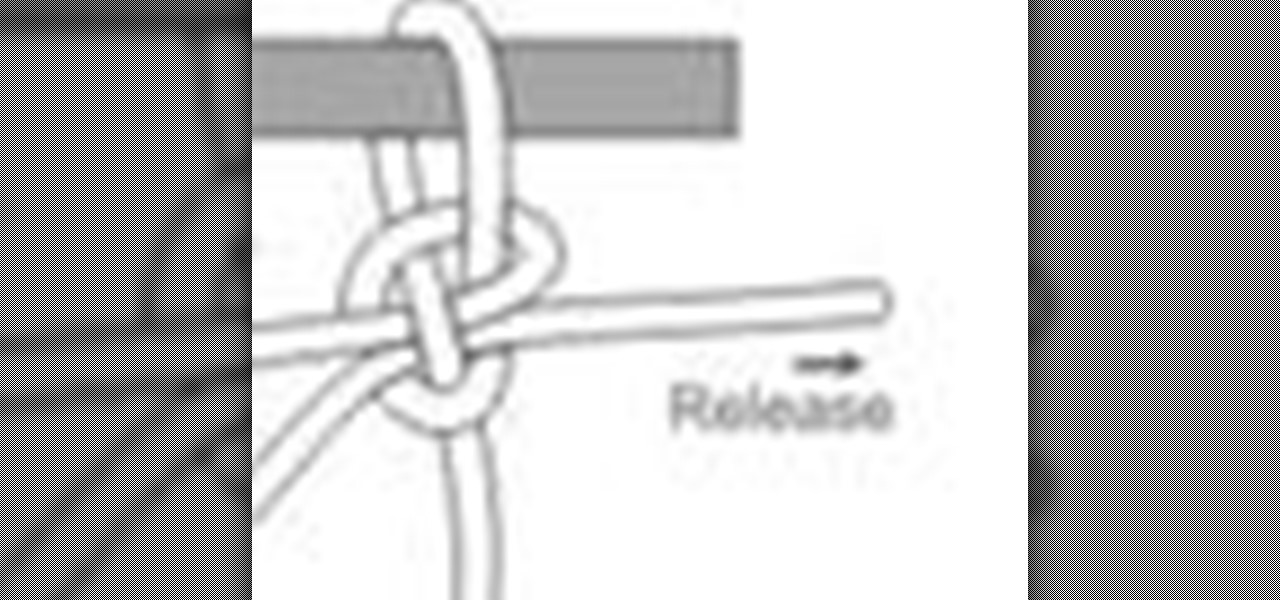
How To: Tie the mooring hitch knot for boating
The mooring hitch knot for boating is a more secure knot than the better known (and easier to tie) slippery hitch boating knot. The mooring hitch knot holds fast while under tension yet can be released quickly with a tug on the free end. Despite it's name, this is a temporary boating knot and not to be trusted to moor a boat or anything else of value! Hope this knot tying instructional video helps you perfect your mooring hitch boating knot. Enjoy! Tie the mooring hitch knot for boating.

How To: Tie the monkey's fist boating knot
There are often requests for the Monkey’s Fist (or Paw) Knot so here it is! Watch this instructional knot tying video to learn how to tie your own perfect monkey's fist boating knot. The key to tying the monkey's fist knot successfully is to have a small ball or core to insert into the knot before tightening it up. The core must match the size of the knot - which is dependent on the size of the rope being used - for the knot to finish right. Some trial and error is to be expected when first t...

How To: Tie the rolling hitch knot for boating
Watch this instructional video to learn how to perfect your rolling hitch knot for boating. The rolling hitch knot is a secure and easy to tie method of fastening a rope to a post. The rolling hitch knot holds firmly in the direction of the standing line. Not for use by climbers though, just boaters! Pass this helpful knot tying tip along to your friends. Tie the rolling hitch knot for boating.

How To: Tie the slip knot for boating
This version of the slip knot is basically a uni knot tied with rope and with just one or two wraps around the double line. It does the trick and is easy to tie.

How To: Tie the slipped buntline knot for boating
Learn how to do this quick release version of the slipped buntline boating knot. It allows the loop to be released with a tug of the tag end. This instructional diagram is helpful for boaters interested in mastering the slipped bluntline knot. Tie the slipped buntline knot for boating.

How To: Tie the square knot for boating
Watch out for this popular knot - the square knot for boating. It is including here as much as to warn you of its pitfalls as to show the proper way to tie it! The square knot is an easy to tie knot that is good for securing non-critical items. It should not be trusted to join two ropes together or to hold down something that absolutely has to stay put. This knot will capsize or jam under load and will also untie itself under movement. This knot tying instructional animation will help you hon...
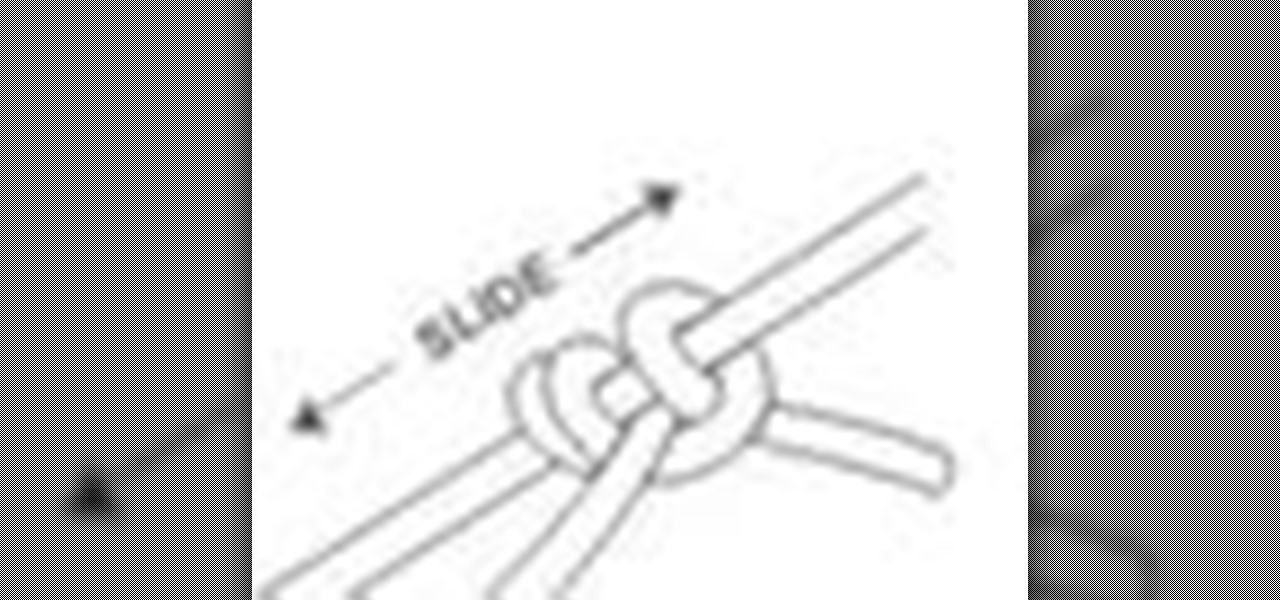
How To: Tie the tautline hitch knot for camping
Watch this instructional video to learn how to tie the tautline hitch knot for camping. The tautline hitch knot is a favorite among campers. This knot is useful for adjusting the tension of tent guy lines and laundry lines, among other uses. The tautline hitch knot can be slipped to tighten or loosen a line, then holds fast under load. Tie the tautline hitch knot for camping.
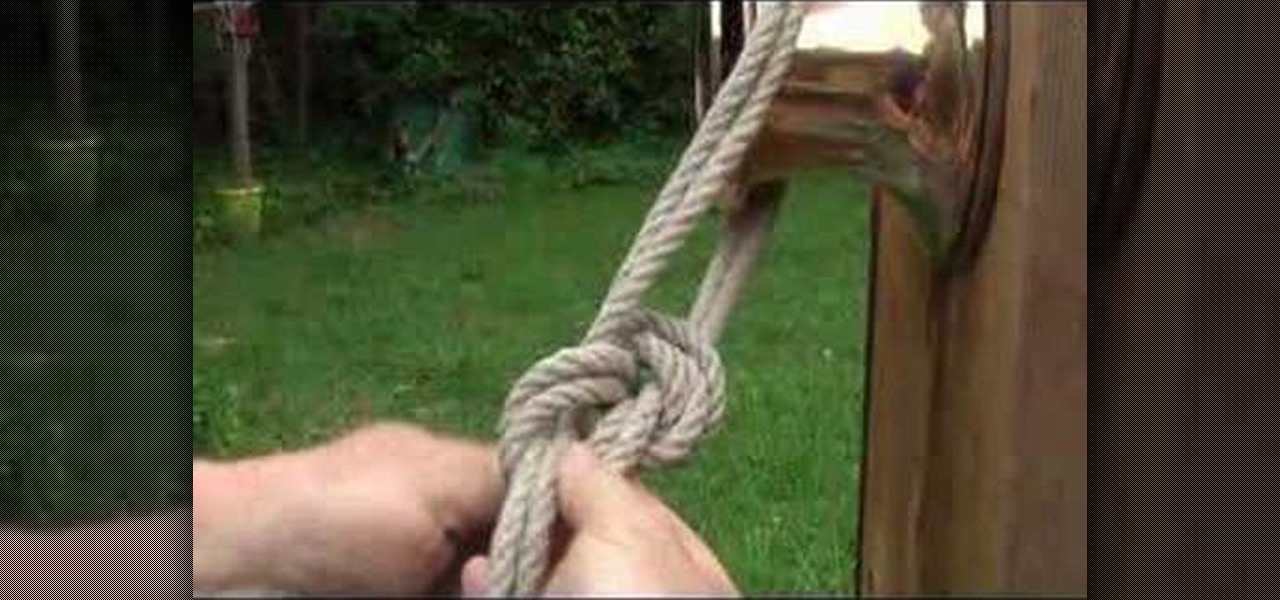
How To: Tie a variation of the bowline knot for sailing
This is a home grown variant of the bowline, also useful for sailing. The bowline is tied in the standard manner in the bight of the rope. The running end is passed below the knot and follows the turn back around through the locking bend. The exiting loop can be used for lifting or for tensioning the line to tie down deck cargo. Check out this video sailing tutorial and learn how to tie a variation of the bowline knot.

How To: Tie a Portugese Bowline knot for sailing
The method demonstrated in this how-to video makes the Bowline knot quick and easy to tie. It is useful when you expect a blow and need to take a few turns around your winch to use as an additional hardpoint. In this case I am simulating a mast winch but the process can be used on a horizontally mounted winch as well. The secret is to form the bowline eye by capsizing an overhand knot. With the standing part in your left hand form a turn around the winch from top to bottom then cross the runn...

How To: Tie the figure eight knot for boating or paddling
The figure eight follow through boating knot is one of the strongest knots. (also can be used for paddling). It is generally rated at 70% - 75% of rope strength. Due to it's strength and the fact that it is easy to visually inspect, it is commonly used by climbers as their "tie-in knot" - the knot that connects the climber to the rope. It forms a secure non-slip loop at the end of a rope. For even greater security, finish the tag end with a backup knot such as one side of the double fisherman...

How To: Tie the double fisherman's knot for boating
Watch this boating instructional video to learn how to tie the double fisherman's knot. The double fisherman's knot securely ties two ropes together or can be used to tie the ends of rope or cord together to form the loops. Another use for this knot is to make another baoting knot more secure by tying this knot with the tag end of the rope behind another boating knot, a practice common to mountain climbers. In that case, you are effectively tying one half of the double fisherman's boating kno...

How To: Tie the constrictor knot for boating
Watch this instructional video to learn how to tie the constrictor boating knot. This is a useful boating knot to tie up loose materials or the ends of bags. Simple to tie, it grips itself and will not work loose. The constrictor knot is also known as the miller's knot or the bag knot. Tie the constrictor knot for boating.

How To: Tie the clove hitch knot for boating
Watch this instructional video on tying boat knots, specifically the clove hitch boating knot. This is a simple all purpose hitch. Easy to tie and untie, it holds firmly but is not totally secure. Make a turn around a post with the free end running underneath the standing part. Take a second turn around in the same direction and feed the free end through the eye of the second turn. Pull the clove hitch knot tight. Voila! Now you know how to tie the boating knot known as the clove hitch knot. ...

How To: Do basic pogo stick tricks
It's quite the challenge to be able to bounce up and down on a pogo stick, but once that's mastered, it's time to start learning some tricks. Start off with the 180 flip, the no footer, and the peg grab pogo stick tricks. Follow along with the demonstrated steps in this instructional video and learn how to do a few basic pogo stick tricks.

How To: Tie the buntline hitch boating knot
Use this knot (buntline hitch boating knot) to fasten items such as snaps and rings to rope or cord. It forms a small, neat and very reliable boating knot. Not to be used however, for tying into a climbing rope. Watch this boating knot tying video tutorial for helpful tips. Pass the end of the rope through the shackle, then back up across the standing part. Make a turn around the standing line, forming a loop with the shackle at the base of the loop. Bring the free end across tops of both par...
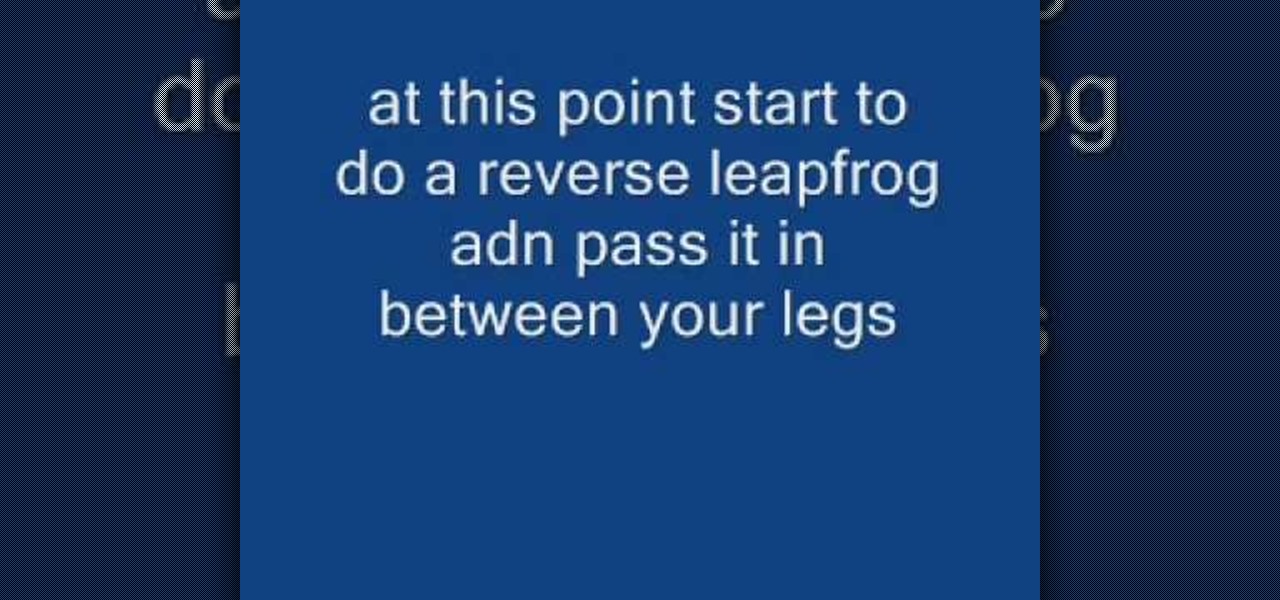
How To: Do a v-wrap pogo stick move
Looking for some new tricks to perform on the pogo stick? Start off in bus driver (twisted hand) position, then while jumping high do a backward 360 reverse, and graduate to a reverse leapfrog done between the legs. That's called a v-wrap. Learn how to do a v-wrap move by watching and following along with this video pogo stick trick tutorial.

How To: Tie the anchor bend knot for boating
The Anchor Bend is the boating knot generally used to fasten a line to an anchor. The free end should be secured with seizing to the standing line for a permanent, secure knot. One side of a Double Fisherman’s also makes a good backup knot to this and any knot. Make two turns around the shackle, leaving turns open. Talk a half turn around the standing line and feed the free end through the turns and pull tight. Now tie a half hitch around the standing part and pull tight. Seize the free end o...
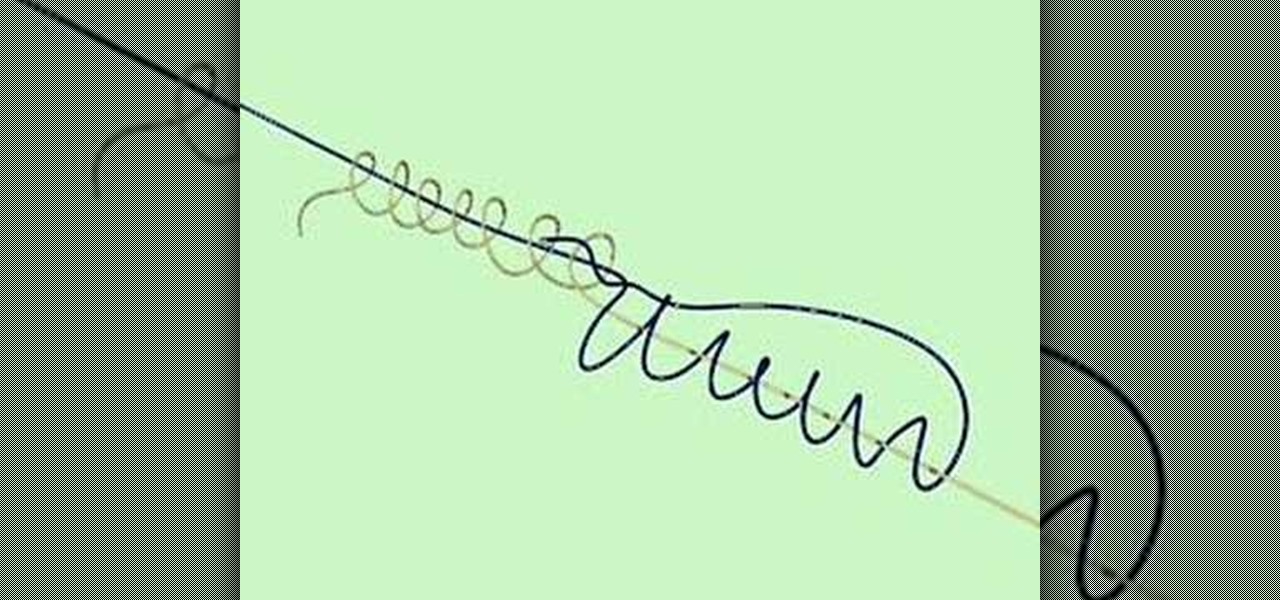
How To: Tie the blood knot for bass fishing
The blood knot, as demonstrated in this how-to video, is one of the best knots in fishing, recommended by most pros through out history. A blood knot is good for joining sections of monofilament without losing any of the strength of the fishing line, making it ideal for larger fish fishing, like bass. Watch this video knot-tying tutorial and learn how to tie the blood knot when bass fishing.
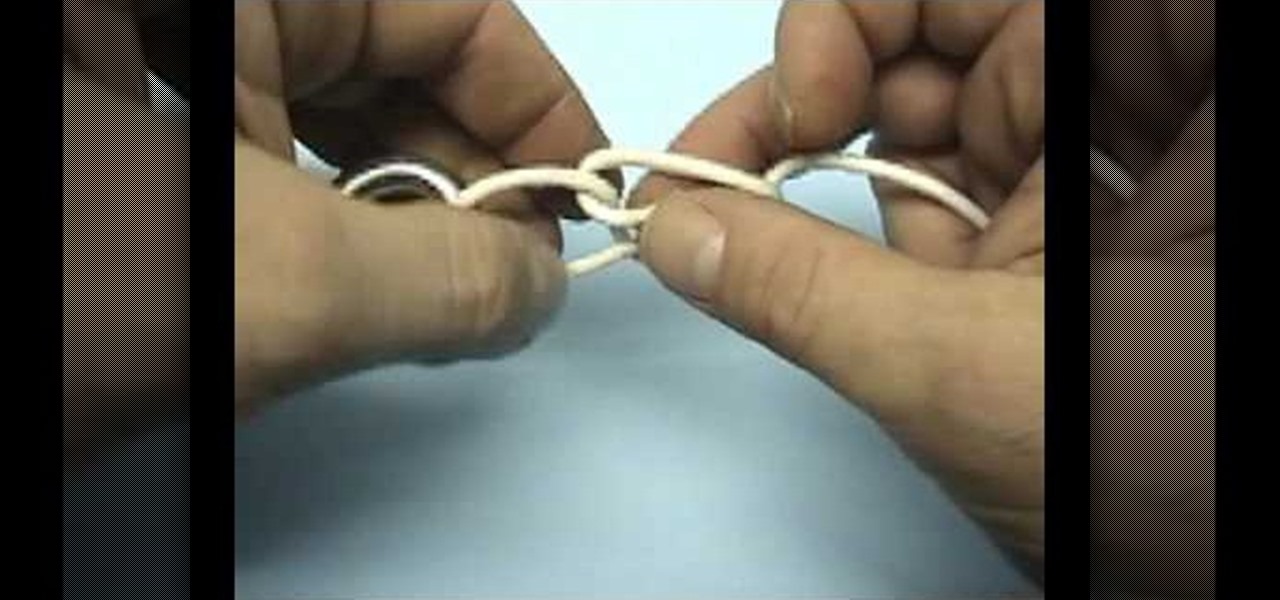
How To: Tie the improved clinch knot for fishing
When fly-fishing, use this knot to tie on a fly. The improved clinch knot, as demonstrated step-by-step in this how-to video, is most commonly used to attach a fishing line to the lure but can also attach the monofilament to a swivel or artificial fly. Watch this video knot-tying tutorial and learn how to tie the improved clinch knot for fishing.



